Creating a social media campaign for gambling harm prevention with young volunteers can be highly impactful. Here’s a step-by-step guide on how to structure the campaign:
a) Set Clear Objectives
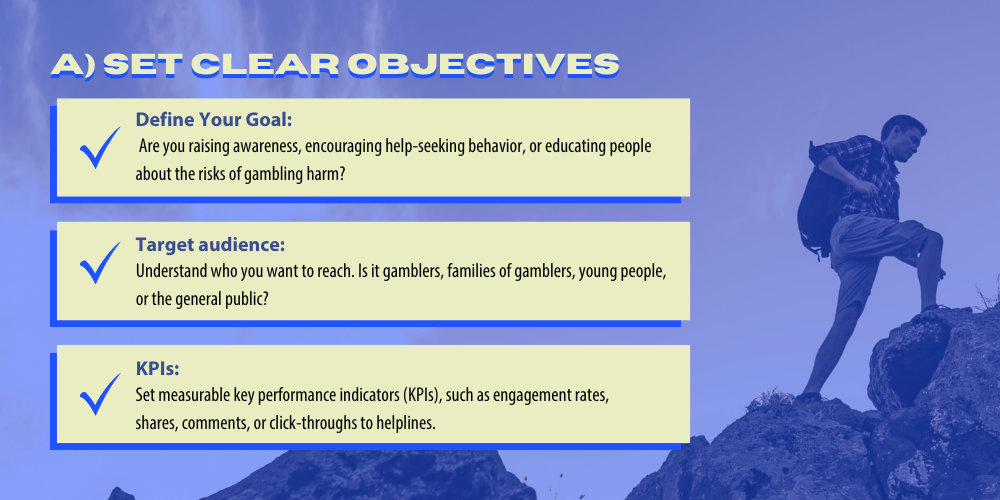
- Define your goal: Are you raising awareness, encouraging help-seeking behavior, or educating people about the risks of gambling harm?
- Target audience: Understand who you want to reach. Is it gamblers, families of gamblers, young people, or the general public?
- KPIs:Set measurable key performance indicators (KPIs), such as engagement rates, shares, comments, or click-throughs to helplines.
b) Create Key Messages
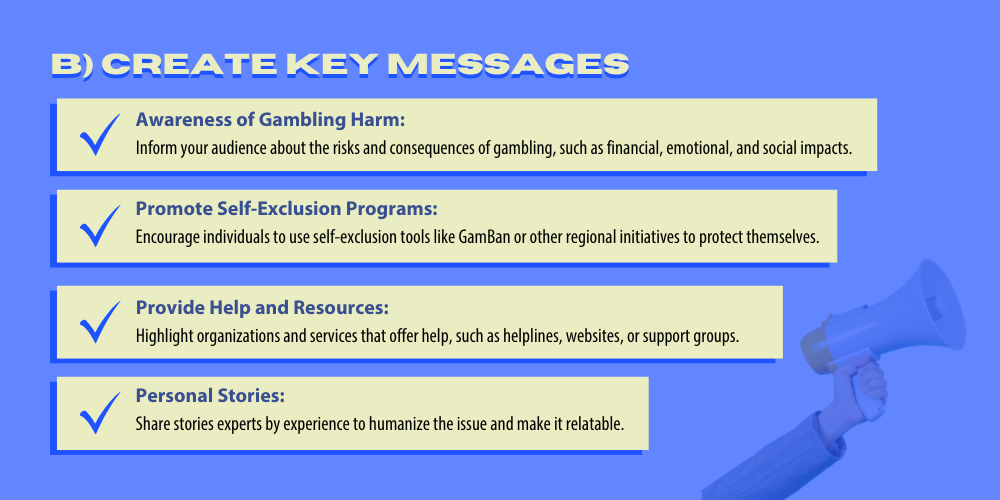
- Awareness of Gambling Harm: Inform your audience about the risks and consequences of gambling, such as financial, emotional, and social impacts.
- Provide Help and Resources: Highlight organizations and services that offer help, such as helplines, websites, or support groups.
- Personal Stories: Share stories experts by experience to humanize the issue and make it relatable.
- Promote Self-Exclusion Programs: Encourage individuals to use self-exclusion tools like GamBan or other regional initiatives to protect themselves.
c) Choose the Right Platforms

- Facebook: Use for long-form posts, sharing articles, stories, and live videos.
- Instagram: Focus on short-form visual content like infographics, quotes, and stories. Utilize IGTV or reels for quick educational snippets.
- Twitter: Share quick, concise messages and engage in conversations around relevant hashtags (e.g., #GamblingHarmAwareness, #EndGamblingHarm).
- TikTok: Create short, impactful videos that explain gambling harm or share testimonials.
- LinkedIn: Share professional insights or articles for a more business-oriented audience.
- Discord: a popular platform to organise content, activities and volunteers of a campaign
d) Design Engaging Content

- Infographics and statistics: Create visually appealing infographics that show gambling harm facts and statistics. Ensure the design is clear and easy to digest.
- Videos: Create short videos explaining gambling harm, including expert opinions, recovery stories, or tips on how to get help.
- Quotes: Share motivational or educational quotes to encourage discussion.
- Interactive content: Polls, quizzes, or open-ended questions can engage followers in conversation about their awareness of gambling harm.
- Hashtags: Use popular, relevant hashtags (#GamblingPrevention, #StopGambling, #GamblingAddiction, etc.) to reach a broader audience and create a community discussion.
e) Engage with Your Audience
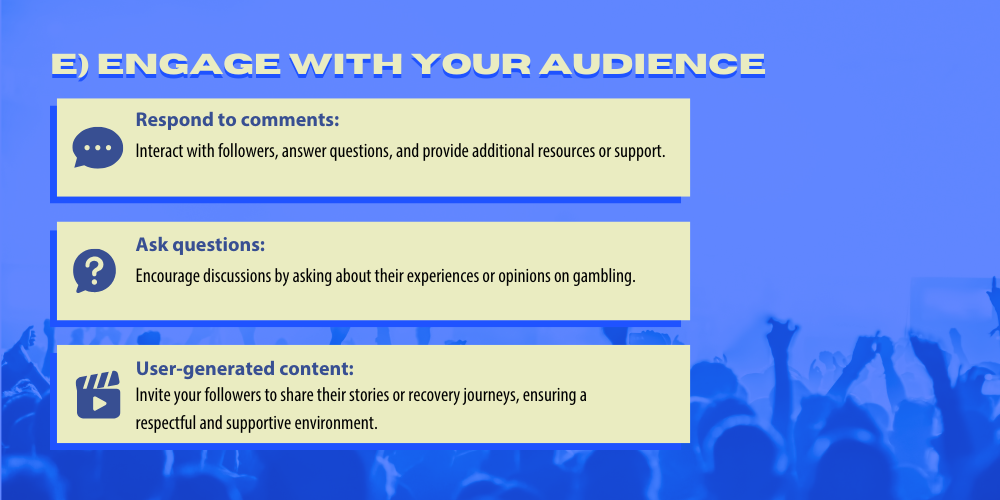
- Respond to comments: Interact with followers, answer questions, and provide additional resources or support.
- Ask questions: Encourage discussions by asking about their experiences or opinions on gambling.
- User-generated content: Invite your followers to share their stories or recovery journeys, ensuring a respectful and supportive environment.
f) Partner with Influencers or Organizations
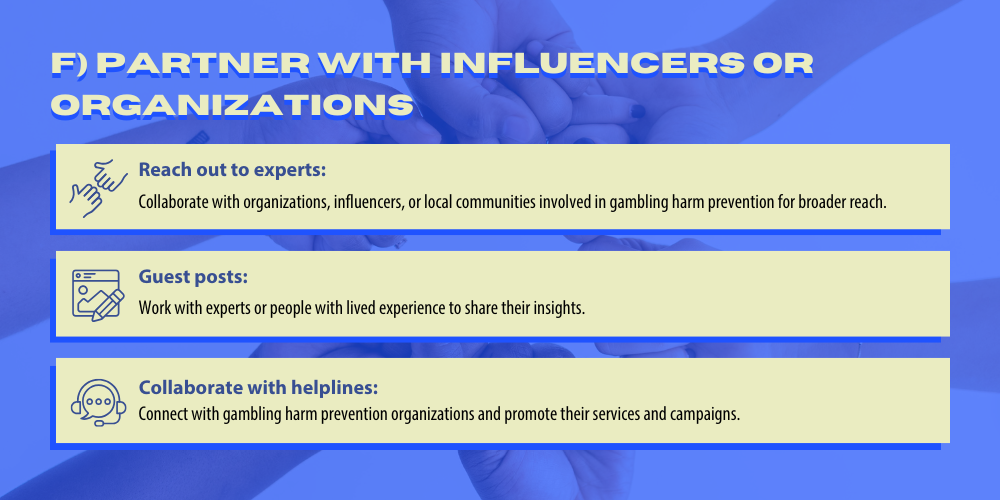
- Reach out to experts: Collaborate with organizations, influencers, or local communities involved in gambling harm prevention for broader reach.
- Guest posts: Work with experts or people with lived experience to share their insights.
- Collaborate with helplines: Connect with gambling harm prevention organizations and promote their services and campaigns.
g) Content Calendar and Consistency
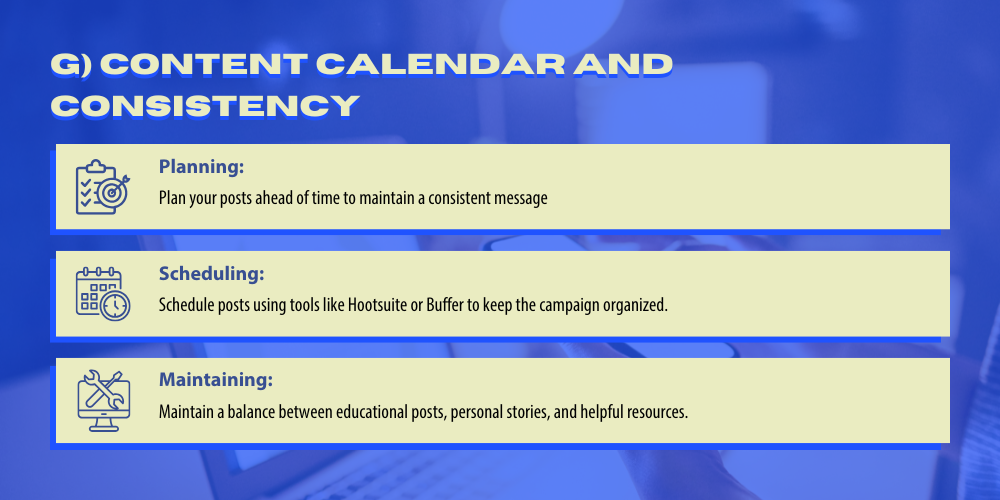
- Plan your posts ahead of time to maintain a consistent message
- Schedule posts using tools like Hootsuite or Buffer to keep the campaign organized.
- Maintain a balance between educational posts, personal stories, and helpful resources.
h) Evaluate and Adapt

- Track engagement:Monitor likes, shares, comments, and other KPIs to see what works and what doesn’t.
- Survey your audience: Consider running short surveys to see if the message is getting through and what more people would like to learn.
- Adapt based on feedback: Adjust the content or the platform strategies to improve impact.
i) Provide Actionable Steps
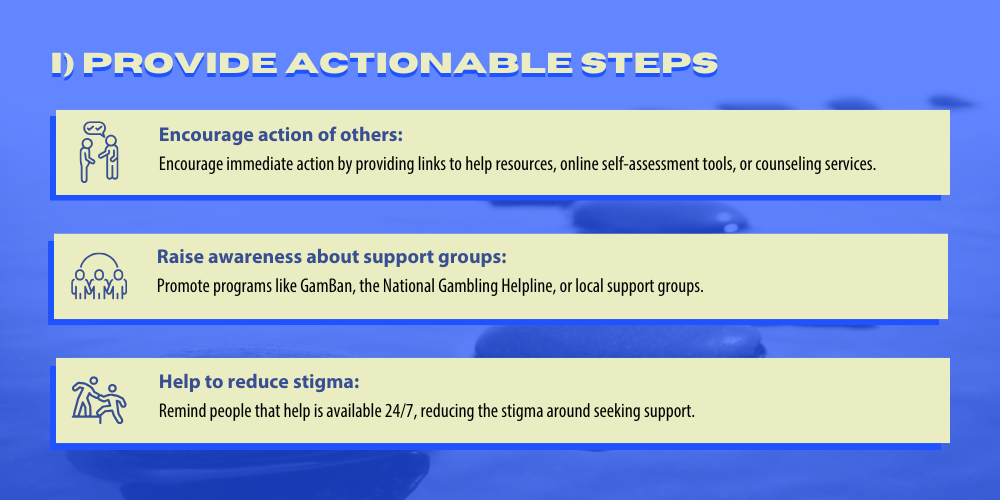
- Encourage immediate action by providing links to help resources, online self-assessment tools, or counseling services.
- Promote programs like GamBan, the National Gambling Helpline, or local support groups.
- Remind people that help is available 24/7, reducing the stigma around seeking support.
j) Stay Compassionate and Non-judgmental:
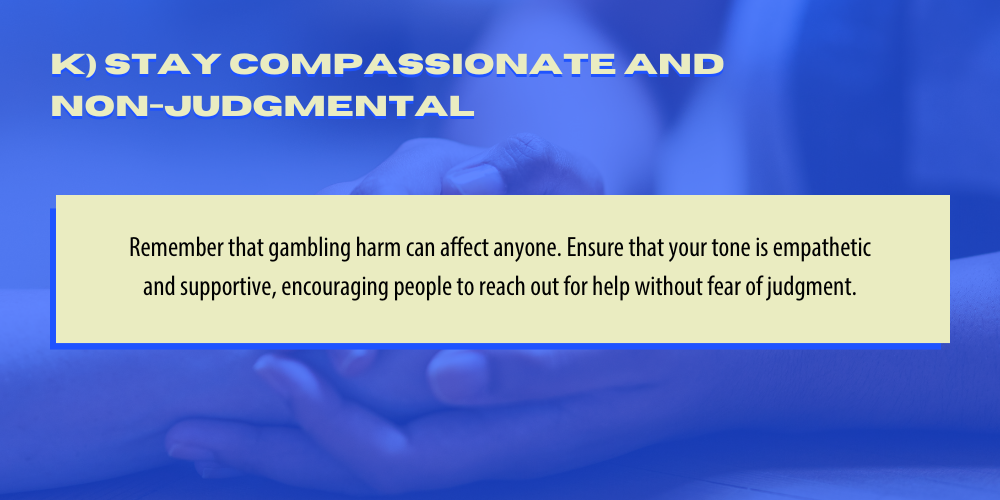
- Remember that gambling harm can affect anyone. Ensure that your tone is empathetic and supportive, encouraging people to reach out for help without fear of judgment.
Example Campaign Timeline:
- Week 1: Raise awareness with statistics and infographics. Focus on educating about gambling risks.
- Week 2: Share personal stories by experts by experience or other expert interviews to humanize the issue.
- Week 3: Highlight resources, tools, and support options for individuals.
- Week 4: Encourage action (e.g., taking self-assessments, contacting help centers, or participating in a support group).
Tools to Use:
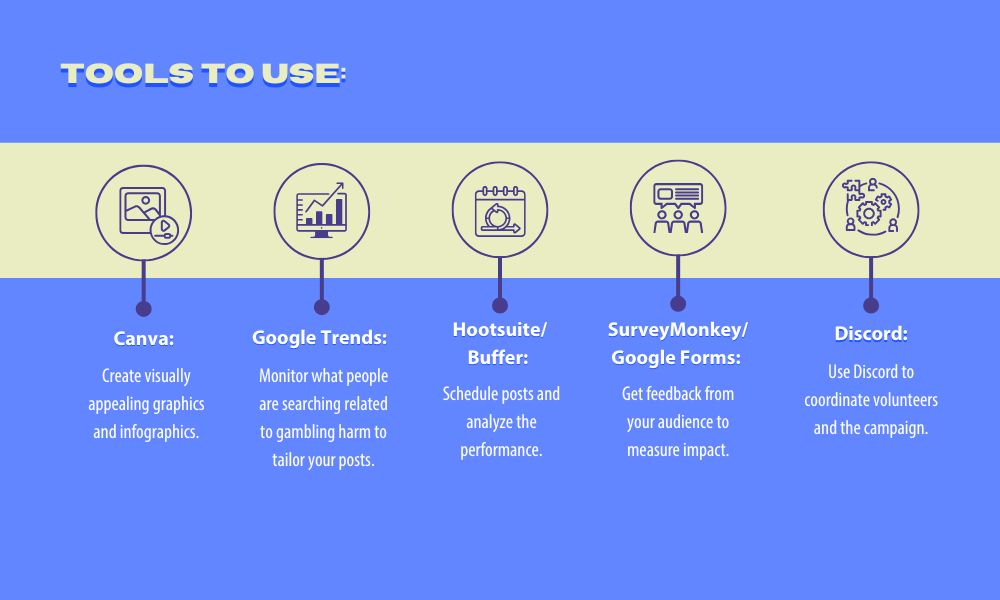
- Canva: Create visually appealing graphics and infographics.
- Google Trends: Monitor what people are searching related to gambling harm to tailor your posts.
- Hootsuite/Buffer: Schedule posts and analyze the performance.
- SurveyMonkey/Google Forms: Get feedback from your audience to measure impact.
- Use Discord to coordinate volunteers and the campaign actions
By combining clear objectives, effective messaging, and consistent engagement, your online campaign can help raise awareness about gambling harm and provide much-needed support to those in need.